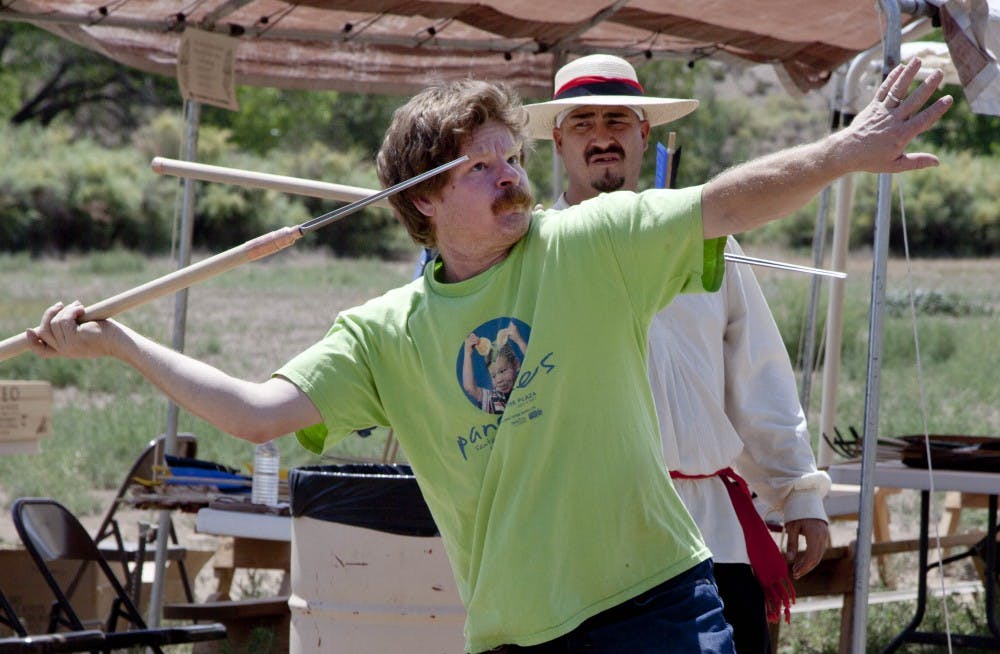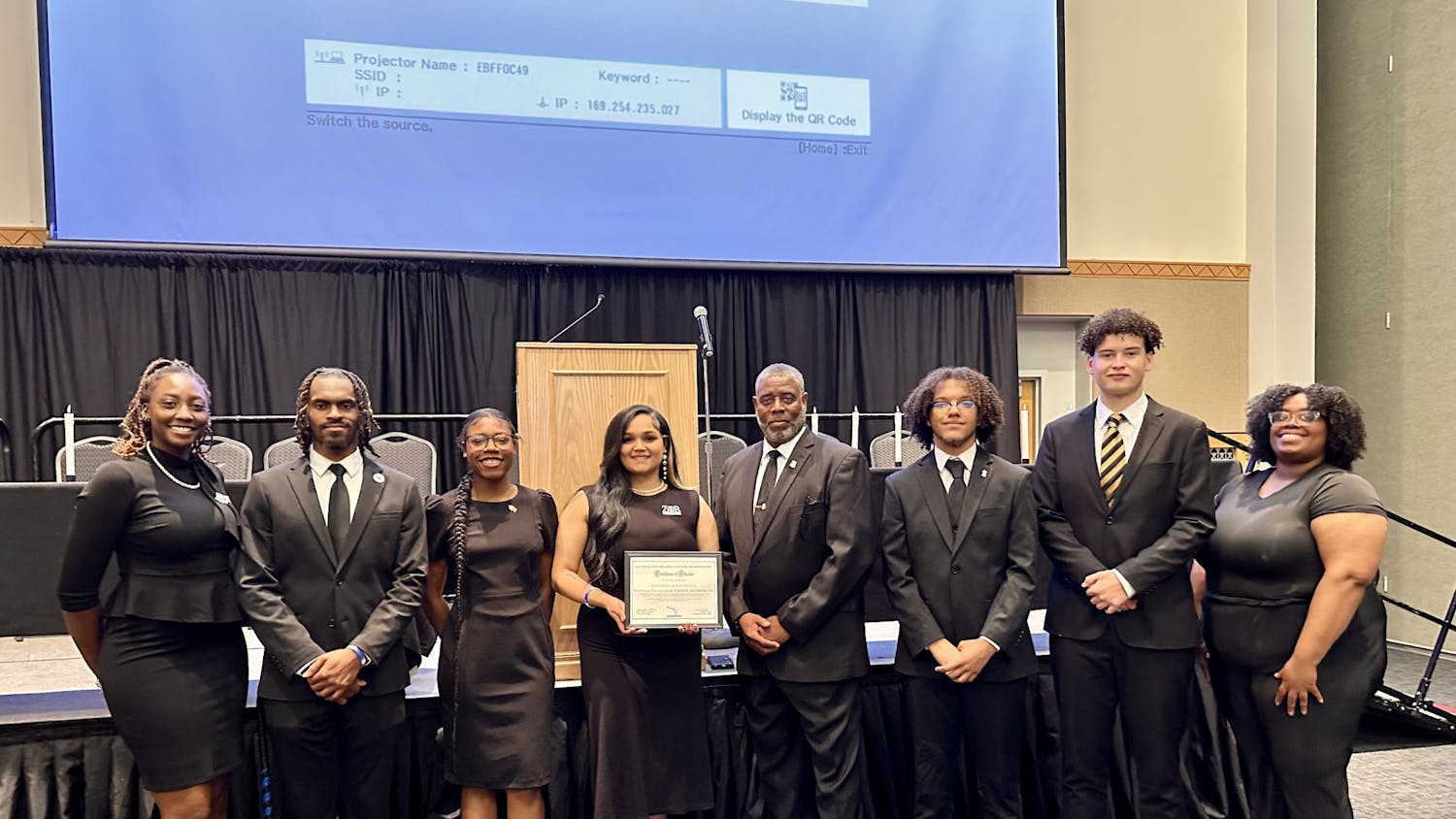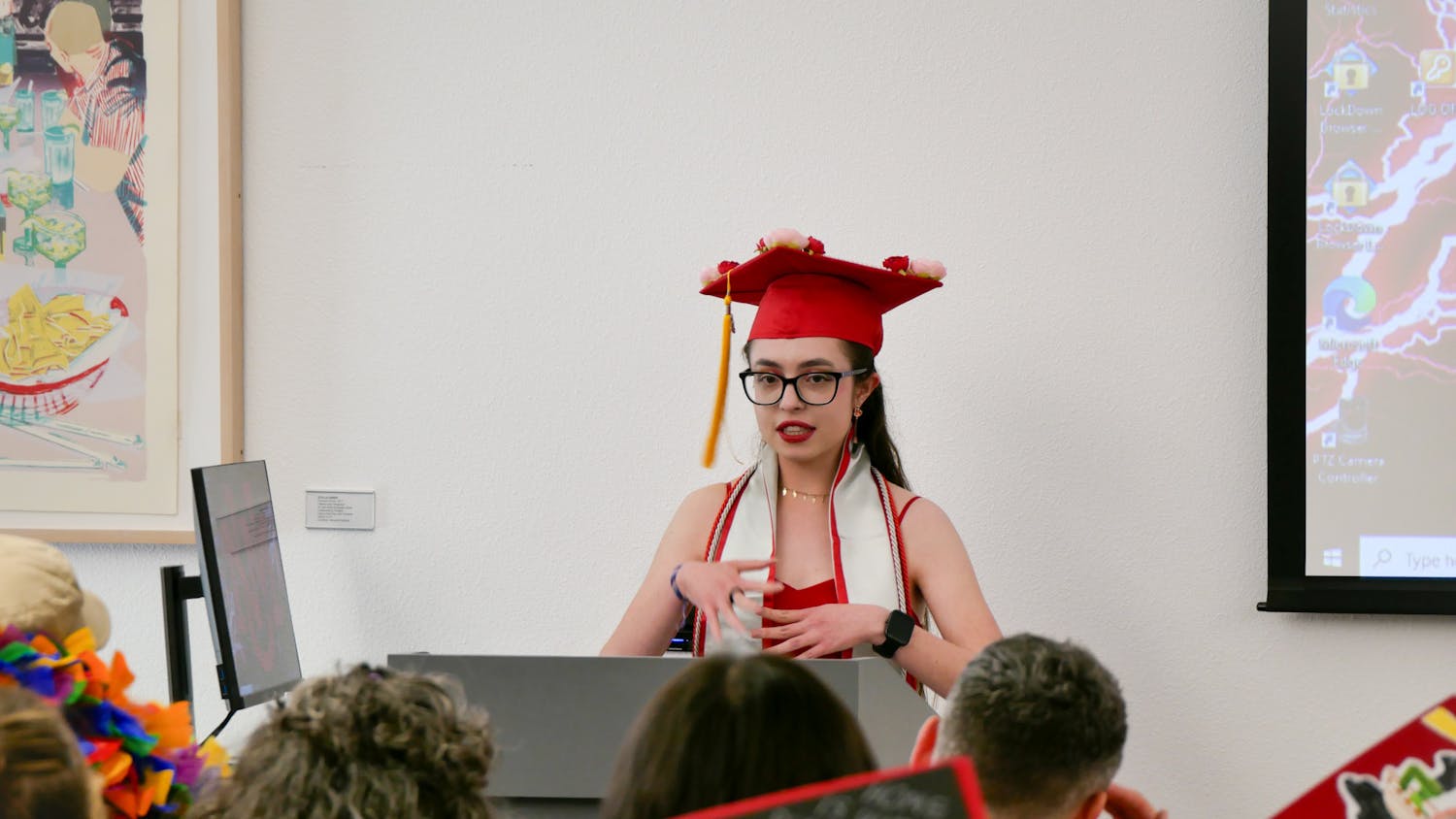culture@dailylobo.com
Two women in colonial dresses spun wool outside a hot horno, baking bread over an open flame, as a family of four snapped a digital photo of the 18th-century scene.
Although it was sparse, technology was still present at this year’s “Survival: New Mexico,” El Rancho de las Golondrinas’ two-day survival festival on Saturday and Sunday.
Local survival enthusiast Tom Wilkie said today’s society has forgotten what it means to survive.
“You understand how to use your iPhone, now do you understand how to use a rock? I’ll hand it to you, you do what’s next,” Wilkie said. “Coming here is the chance for people to learn natural technology. It’s important that you learn it’s not simple.”
Wilkie is just one of 600 volunteers who participated at this year’s “Survival: New Mexico,” which demonstrated life in New Mexico in the 18th and 19th centuries. The event taught children and adults history as well as how to hunt with a bow and arrows, spin wool and kindle a fire.
Wilkie taught others how to make arrowheads and sold elk-leg bone knives under one of the event’s many tents. Wilkie said his interest in survival techniques was sparked five years ago after enduring a blackout while working in New York City.
Wilkie said that “Survival: New Mexico” promotes a hands-on approach to teaching survival techniques that museums cannot offer.
“You can’t go to a museum and put a piece in your hand. You don’t know the ways or how the edges feel like. You only theoretically know things,” he said. “Here, you can really know it. Feel the bone knife, feel its weight in your hands. That’s learning.”
Joseph Maes, event founder and curator of historical preservation at Las Golondrinas, said he created the event as a reminder that people once survived in a time without modern technology and luxuries.
“Our electronic devices are fleeting and power can be depleted, but if you have enough confidence to survive in the outdoors — God forbid, you shatter your ankle and you need to give yourself some first aid and make a fire and acquire some shelter — that’s what we’re doing today,” Maes said. “It’s basic skills that, unfortunately, most of our society has forgotten.”
Colonial re-enactors dressed in red headdresses, wool knee socks and brown leather loafers were involved in many of the activities. Re-enactor David Geary walked about the event with his floppy Texcuco hat and tan “slopes,” the 1770 Spanish equivalent of modern shorts. Geary had constructed every garment he was wearing by hand with material from animals at the event; some of the wool came from a nearby sheep. Geary said he was inspired by his father’s love of history to retire from his job as a communications professor at UNM and become a historical re-enactor.
Get content from The Daily Lobo delivered to your inbox
Archery supervisor Tom Whitson, a retired professor from the University of Wyoming, said that events like “Survival: New Mexico” promote more than survival techniques: they encourage kids to partake in more hands-on activities.
“When you see a little kid, when they hit for the first time those blue targets, their eyes light up and they’re all excited; the first thing they’re asking from their mom and dad is for a bow and arrow for Christmas,” Whitson said. “We all need a new challenge, and I think that these are those things that allow them to realize that sitting in front of a computer all day isn’t as satisfying as working with a bow and arrow.”






